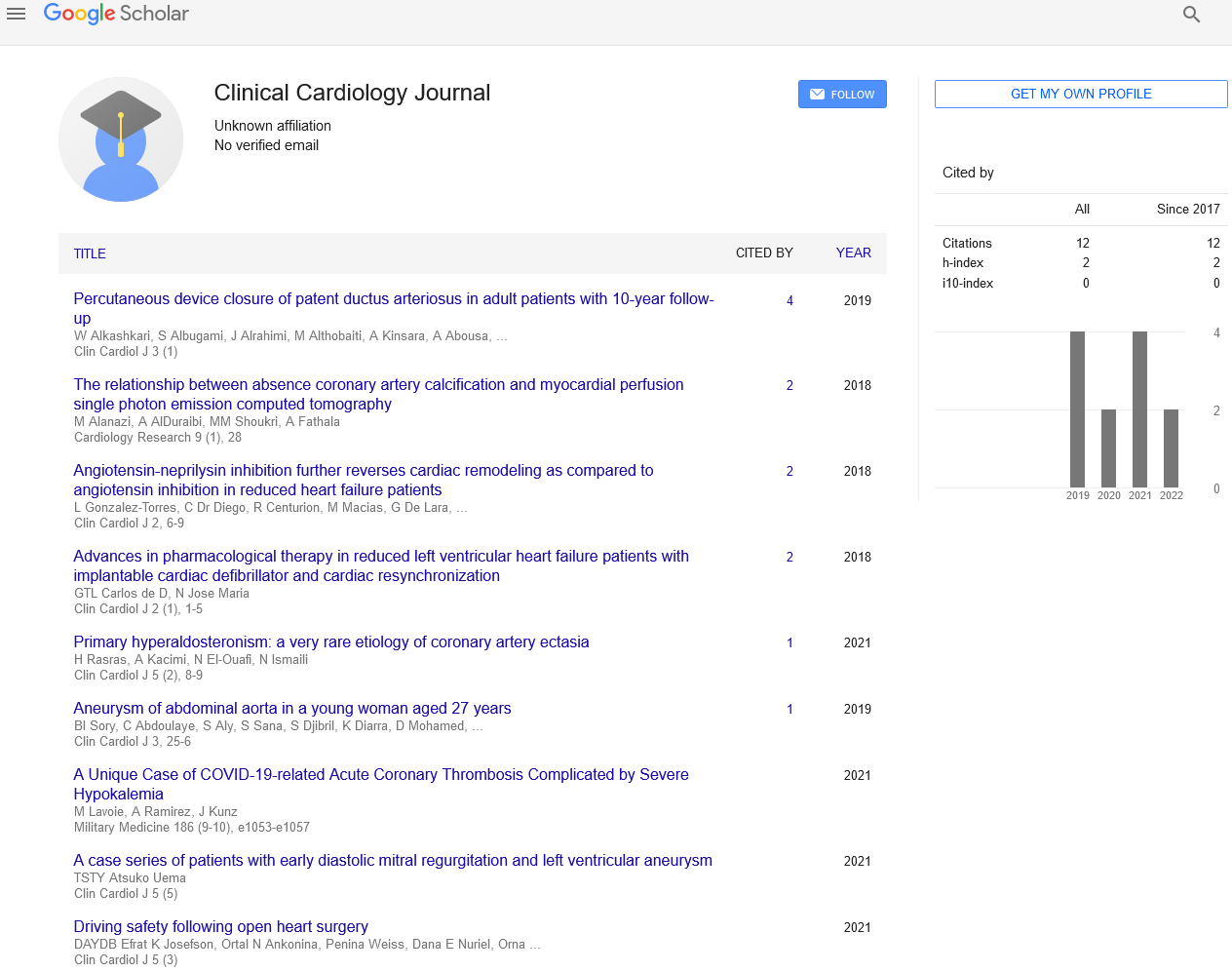Preclinical models on cardiovascular system disorders
Received: 02-Jul-2020 Accepted Date: Jul 16, 2020; Published: 23-Jul-2020
This open-access article is distributed under the terms of the Creative Commons Attribution Non-Commercial License (CC BY-NC) (http://creativecommons.org/licenses/by-nc/4.0/), which permits reuse, distribution and reproduction of the article, provided that the original work is properly cited and the reuse is restricted to noncommercial purposes. For commercial reuse, contact reprints@pulsus.com
Editorial
Preclinical model
Provides study to test a drug, procedure or medical treatment in animals. The aim is to collect data in support of safety. Preclinical studies are required before a clinical trial can be started.
Cardiovascular system
It is a system comprising of heart and blood vessels. where heart is the pumping organ of the body consisting of 4 chambers, namely right auricle, right ventricle, left auricle, and left ventricle.
Preclinical model on drugs used in hypertension
Chronic renal hypertension in rats
Based on previous research that ischemia of the kidneys induces hypertension; various modifications of the technique have been described for several animal species. One of the most effective modifications in rats is the so-called 1-kidney-1-clip me.
Calcium antagonism in the isolated rabbit aorta
Contraction of aorta rings is induced by adding potassium chloride or norepinephrine to the organ bath containing slightly modified Krebs bicarbonate buffer. Test drugs with calcium channel blocking activity have a relaxing effect.
Preclinical models on drugs used in atherosclerosis
In-vivo tests for a cat inhibitory activity
Atheroma is a focal disease of large and medium-sized arteries. Scientists found that dietary cholesterol was the responsible stimulus for the development of atherosclerosis. Other species are also susceptible to dietinduced atherosclerosis. Most authors test the in vivo anti-atherosclerotic and anti-hyperglycaemic effect of ACAT inhibitors in cholesterol-fed hypercholesterolemia animals.
In-vitro tests for ACAT inhibitory activity
In vitro ACAT inhibitory activity can be determined in microsomal preparations from liver or intestine of rabbits.
Preclinical models on cardiotonic agents
Isolated cat papillary muscle
Isolated cardiac tissue has been chosen to study the decrease of performance after prolonged electrical stimulation and during the restoration of force under the influence of cardiac glycosides.
Preclinical models on drugs used in arrhythmia
In vitro model Arrhythmia induced by acetylcholine or potassium deficiency
Anti-arrhythmic drugs are used to correct arrhythmic contractions which are too rapid, ineffective contractions, in either the ventricle or atrium i.e. atrial or ventricular arrhythmias and atrial or ventricular tachycardias. The preclinical model methods include either the induction of arrhythmia and its abolition by subsequent administration of a drug or prevention of the arrhythmia by the prior administration
In vivo model arrhythmia induced by aconitine
The plant alkaloid aconitine persistently activates sodium channels. Infusion of aconitine in the anaesthetized rat causes ventricular arrhythmias. Drugs that are having anti-arrhythmic properties are tested in aconitineintoxicated rats.
In the past, a large number of models have been established in animals with overt clinical heart failure to evaluate pathophysiology from the level of the intact-instrumented animal to the tissue homogenate. Anti-arrhythmic drugs exert their effects mainly by modulating conduction velocity, or refractory period duration or both. Conduction velocity, on the one hand, depends, on the passive electrical properties of cardiac tissue, and on other, the characteristics of the Na1+ and Ca2+ channels. In contrast, there are marked differences among species in the K1+ currents that largely determine repolarization, so that action potential duration and duration of the refractory period differ widely in various species. At present, transgenic animal models of heart failure are critically important to understand the molecular alterations underlying the development of the disease. Addition or deletion of the genes in transgenic mice together with miniaturized physiological techniques to evaluate the resulting cardiac phenotypes allow the identification of the genes that are causative for different types of cardiac diseases and to evaluate molecular mechanisms responsible for the development and progression of the disease.





